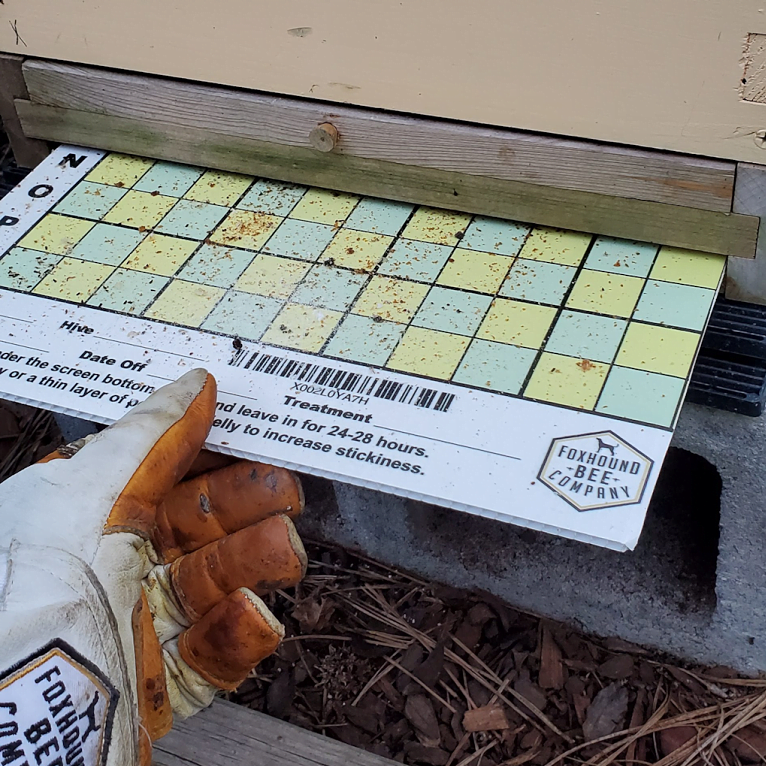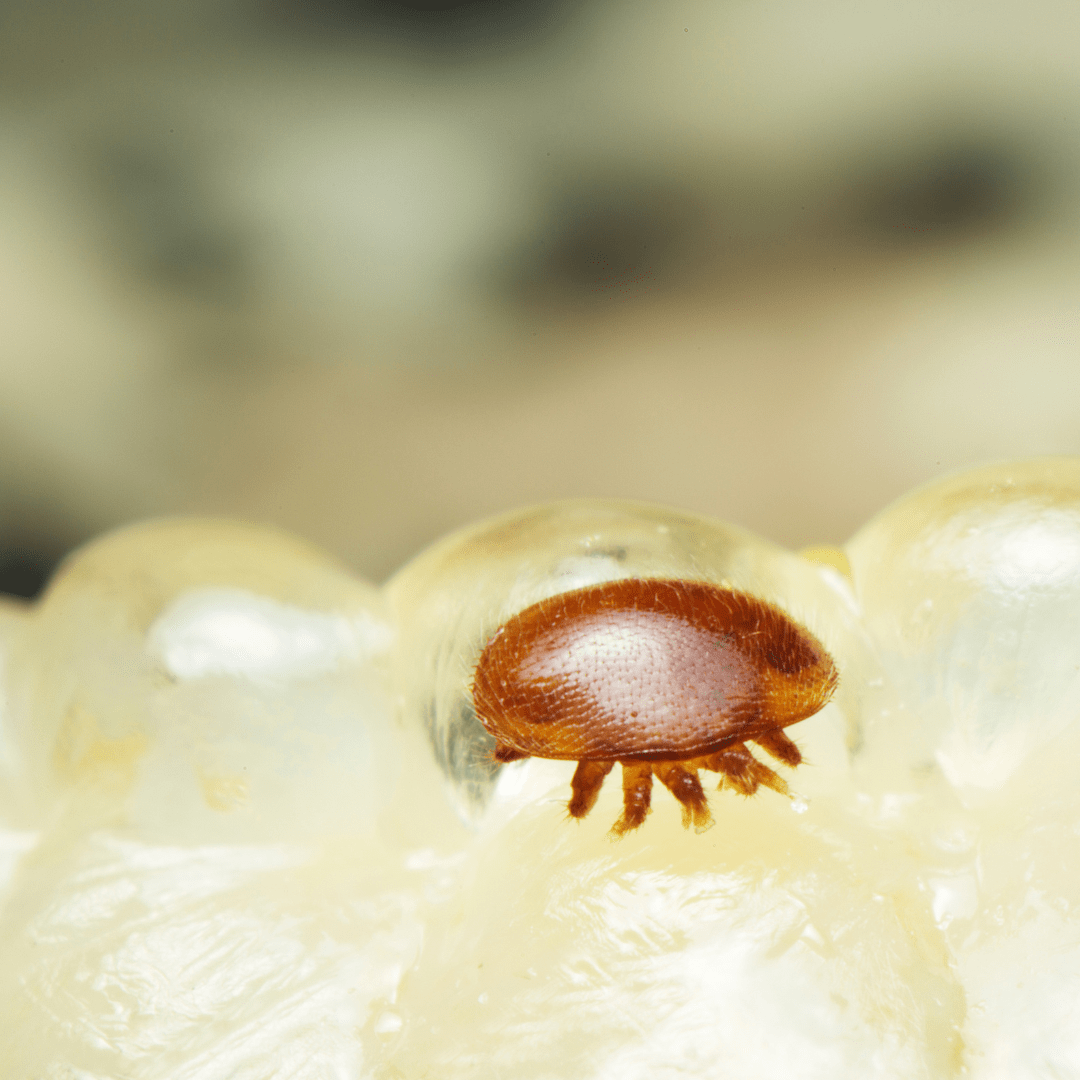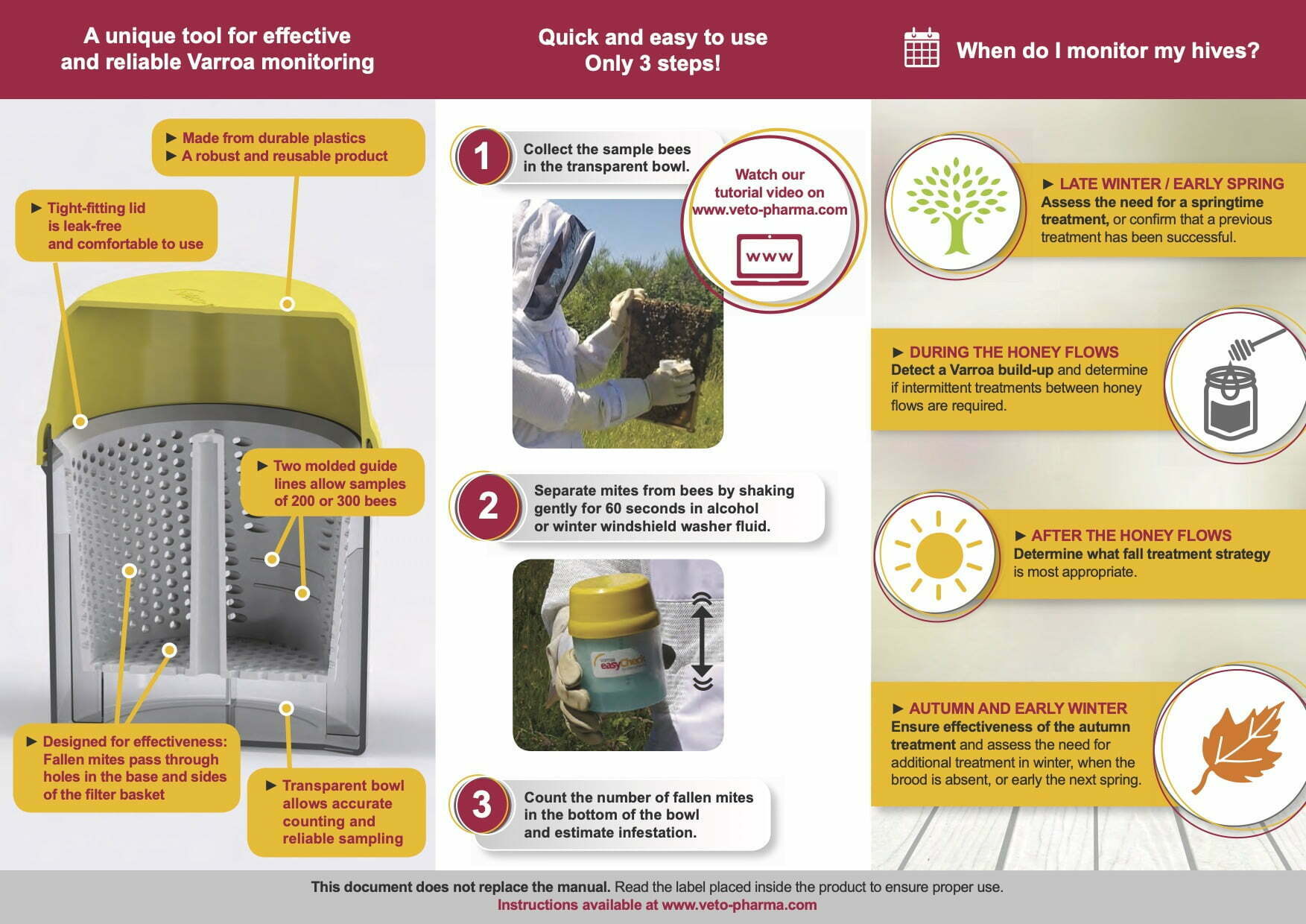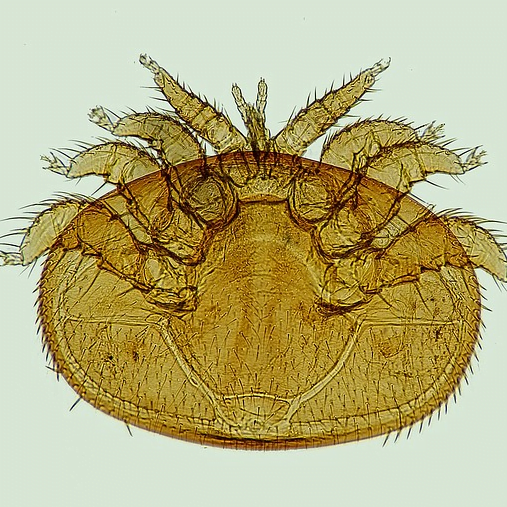
Table of Contents
We can’t overemphasize how awful varroa mites are and how easily they can damage a colony of bees. But fortunately, we have tools that can help make them less of a problem. Varroa EasyCheck is a tool that you can use to check the varroa mite populations in your honey bee colonies to determine if you need mite treatment or not. It’s an important tool for checking the “mite load” of your bees so you can know if action needs to be taken or not to help your bees. But before diving into that, let’s talk first about varroa mites.
Varroa mites are one of the most serious pests in honey bee colonies. They are parasitic mites that attack honey bees for survival and reproduction. And they do a very good job at surviving. Australia was actually the last place with managed bees that didn’t have varroa mites, and they finally found them in 2022.
As its scientific name suggests, Varroa destructor, varroa mites are indeed major destruction to the bee population if detected and treated too late. They’re considered the world’s most devastating honey bee pests and cost hobby and commercial beekeepers millions of dollars every year.

The Reproduction Stage
During mite reproduction, female mites enter the brood cells (both on drone and worker, but mostly on drone brood) during the pre-capping stage, and after the brood cell is capped, they then lay two to five eggs on the larva. Egg-laying occurs in sealed brood where the first egg is male, and the rest are female within a 10-day reproduction cycle. It’s a weird, complicated reproductive cycle where the son mates with it’s sisters. Varroa are weird.
Varroa mites undergo two larval stages before developing into adults: protonymph and deutonymph. Male mites develop into adults in 5-6 days, while female mites take 7-8 days.
Male varroa mites die shortly after the mating process, which occurs exclusively inside the infested brood cell. On the other hand, young female varroa mites will lay eggs once again in other brood cells after 2 weeks.
Both young female and mother mites emerge from the brood cell as the host bees emerge from the brood frames, and the cycle begins again and this process is how varroa populations can explode quickly. Adult female mites usually live for two months.
The Phoretic Stage
Adult female varroa mites are the only ones that feed and attach to adult honey bees. Once attached to their host, the phoretic mite will crawl onto the bee’s abdomen to suck and feed on the bee’s equivalent to blood, the hemolymph. This is where they spread much of their diseases to the adult bee.
Due to the very mobile nature of female varroa mites, the mites are easily and rapidly spread among bees, infecting many of the bees. On the other hand, adult male mite exclusively feeds on larvae and pupae, which means he never leaves the brood box after hatching. They are actually so small, it is extremely hard to see them. Let alone see the females.
What Happen To Honey Bee Colonies With High Mite Infestations
The infestation caused by varroa is called varroosis or varroasis, and this condition should be stopped as early as possible to avoid massive damage to your bee colonies and nearby colonies.
Varroosis can lead to a severe weakening of healthy bees as they no longer have enough nutrients necessary for the different bodily functions such as immunity, hormone and energy regulation, and pesticide detoxification. This increase in varroa mite levels can cause genetic defects, decreased weight in both hatching and adult bees eventually lead to a shorter lifespan.
Varroosis can also lead to other viral infestation since the open wounds left by the sucking of mites can become breeding grounds for other diseases or viral infections, including the famous deformed wing virus (DWV).
It goes without saying that all the negative occurrences mentioned above will also result in a noticeable reduction in the colonies overall ability to prosper.
A high mite count is very dangerous because it can lead to a reduction of the honey bee population that will eventually lead to breakdown and colony death if detected and treated too late. Varroa mites capitalize on the bees constant repetition of it’s brood cycle and can out reproduce the bees easily.
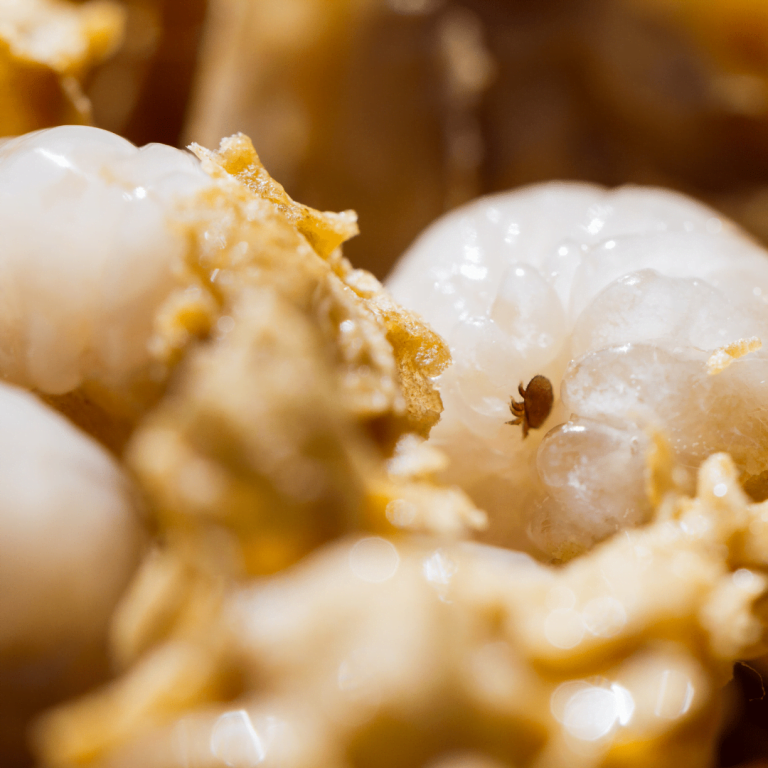
How To Check and Monitor For Varroa Mites
Though the danger of varroa mites is worrisome, early detection can be done to spare your healthy colonies from collapse.
Several methods can be used to manage and control the varroa infestation rate in your colonies. The most common methods are powdered sugar roll, alcohol wash, drone capping, and sticky board monitoring.
When we check for varroa mites, we use a product call the Varroa Easy Check.
Alcohol Wash
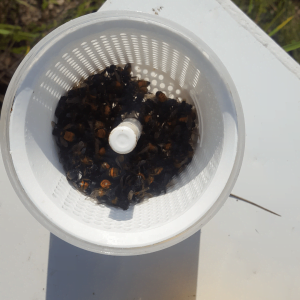
Alcohol wash is recognized as the most reliable, accurate, and economical option in monitoring varroa mite population. It is done by immersing a sample of bees (about 200-300) in alcohol, then shaking the EasyCheck slowly to detach the phoretic mites from the bees, so they can then be counted afterward. The alcohol used for the mite wash should have a very high percentage of alcohol in it. Most beekeepers use rubbing alcohol with a percentage of
Though this method is the most consistent in delivering accurate results compared to the other 2 methods, many beekeepers are hesitant to use it for the reason that sample bees die after the monitoring since they’re immersed into alcohol.
Though it’s true that a number of bees have to be “sacrificed”, you have to put in mind that the 200-300 sample bees are usually less than 1% of the total population, and they can be replaced rapidly since a queen bee can lay more or less 2,000 eggs per day.
Filtering out Varroa from Alcohol
After you use the varroa check, you can re-use the liquid, but you want to be sure to get the varroa mites out. It defeats the purpose if you move the varroa from one test to the other. The filter we like to use to keep our alcohol clean is these filters. They are small enough to keep the varroa mites out but let the alcohol or windshield washing fluid through so it can be reused.
Sugar Roll
This method is commonly used by beekeepers who are discouraged from using the alcohol wash method because this one doesn’t cause the loss of sample bees but is not as accurate as the alcohol wash.
It is done by putting about 2 tablespoons of powdered or icing sugar into the transparent bowl of the EasyCheck, then putting the sample bees of about 200-300 into the white basket, then closing it with the yellow cap. Then gently shake the EasyCheck for the sugar to be mixed with the bees causing the mites to detach from the bees.
After that, remove the yellow lid to let the bees out. The bees emerged a little upset about being agitated but are otherwise unharmed. Then the EasyCheck upside down, removing the sugar into the yellow lid or a bigger container. Then add a bit of water to dissolve the sugar for clear mite counts.
Though this method keeps the sample bees alive, it’s not as accurate as the alcohol wash. This method can be difficult to produce good results when it is humid outside. The humidity in the air can cause the powdered sugar to clump inside the EasyCheck.
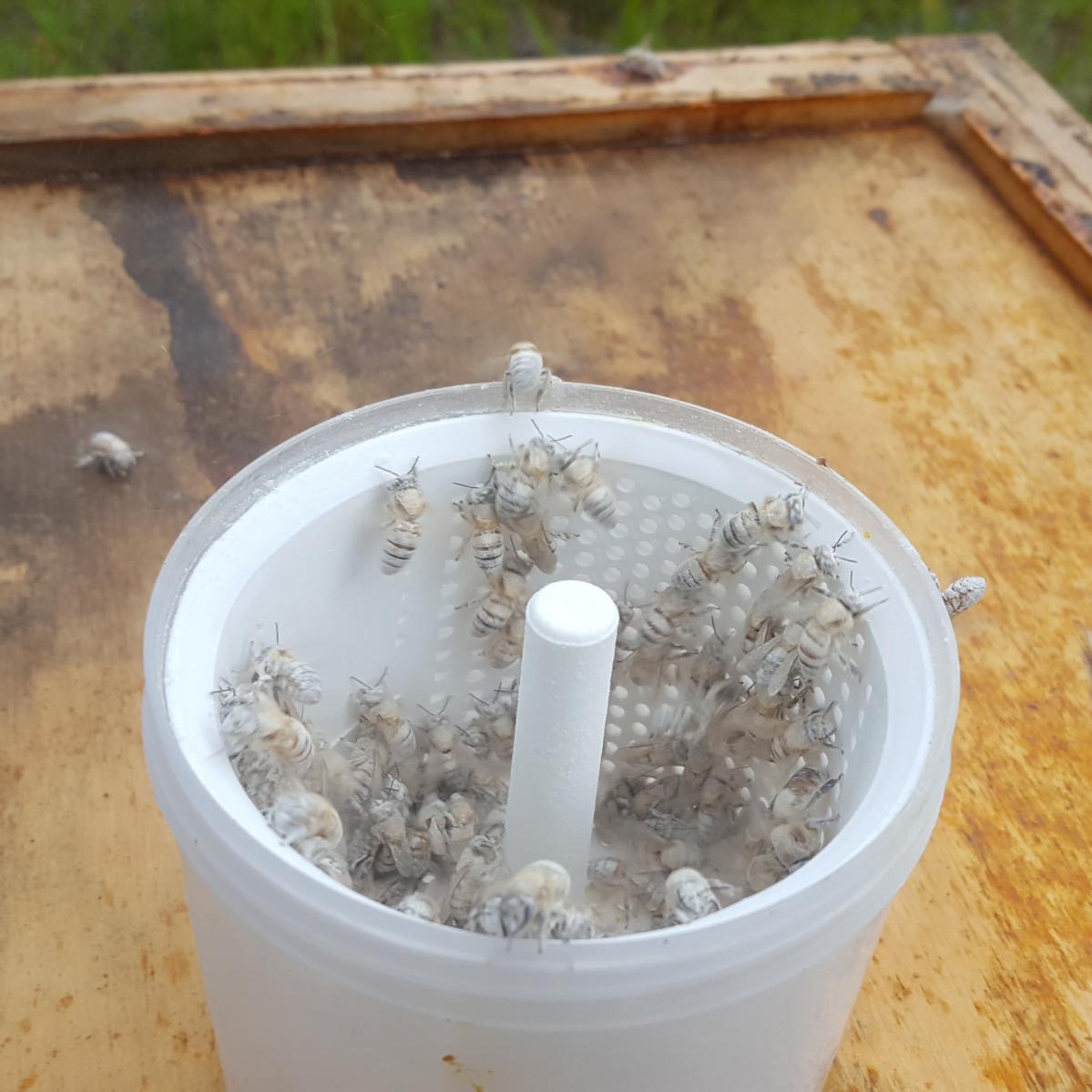
CO2 Injections
In this method, the sample bees are anesthetized through exposure to Carbon dioxide gas. The EasyCheck is then gently shaken for the mites to be detached from the bees and pass through the white basket’s holes. The mites are then counted, and sample bees are released into the hives or the entrance.
Though this method is said to have similar accurate results as the alcohol wash based on a study conducted in Europe with Apis mellifera, it’s not widely used at the moment since the CO2 injector or dispenser and CO2 cartridges are not yet available at affordable prices.
This technique only “knocks out” the bees and doesn’t kill them. While the bees are knocked out, the mites are also knocked out and fall off the bees.
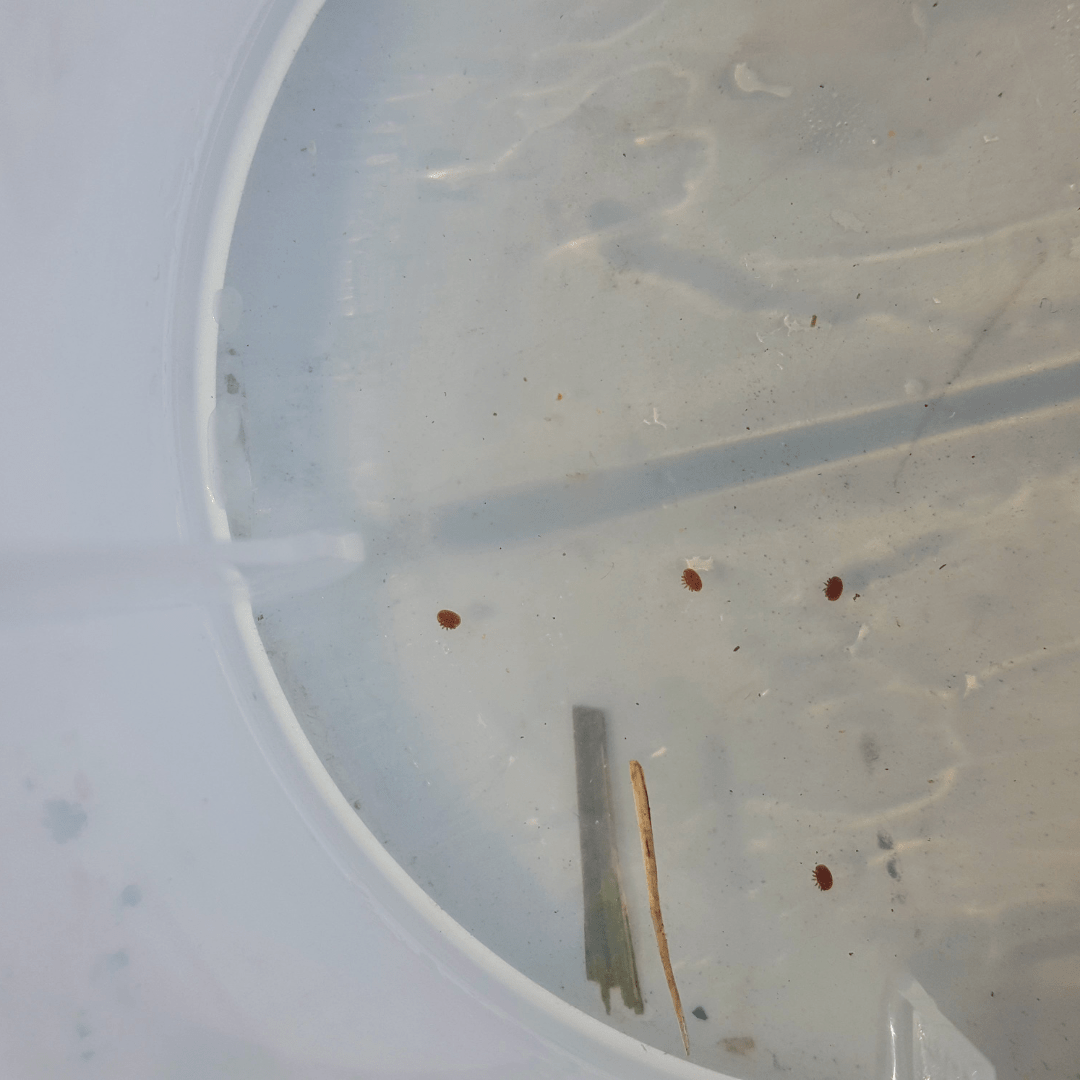
See Our Varroa Mite Control Options
How To manage for varroa mites
The absence of varroa in bee colonies is every beekeeper’s dream, but unfortunately, not all dreams come true. So, you have to deal with the varroa dilemma once mite populations are confirmed in your beehives.
Managing varroa mites properly will require beekeepers to measure the amount of mites in a colony. Measuring is the only way to know if the mites population present on adult bees is exceeding the threshold. Monthly is the ideal monitoring schedule, but most beekeepers check for mites just before their normal treatment schedule and after.
Different mite treatments are already widely available for beekeepers. Varroa mites can be controlled using different approaches such as cultural, mechanical, and chemical. Fortunately, the mite treatments we use now are not as harsh as they used to be. Most of the chemicals available for mite treatments are considered “soft” treatments with organic essential oils as the base.
Oxalic acid treatments are very popular and effective against mites. The most popular way to treat with oxalic acid is with an vaporizer.
The cultural approach aims to reduce the mite populations and treat bees through mite-resistant genetics, brood breaks, and by splitting colonies.
The mechanical approach on the other hand is a mite treatment that aims at killing the mites through physical means by mite trapping, screened bottom board, and powdered sugar shakes.
Ongoing research scattered around the globe is also happening as bee breeders are experimenting with breeding mite-resistant bees as another alternative to varroa control.
Varroa Economic Threshold
The threshold is often referred to as the “economic threshold”, and it is said that when the mite infestation reaches the threshold, the bee colony will undergo decline and become less productive. The colony will eventually die if the number of mites keeps increasing after reaching the threshold. Mite population grows exponentially inside the colony.
Economic threshold differs from region to region, but they aim at keeping mite levels below or around a ratio of 3 mites per 100 bees. Fewer mites than the threshold mean that you don’t have to treat hives. But If you find more than three mites per 100 bees in your monitoring, then you need to act fast in treating varroa since they spread easily and rapidly.
In our example above using the Varroa EasyCheck, the sample of 300 bees will provide a sample of mites to measure. If in that 300 mites, we found 9 mites, then we would use some type of treatment for the varroa mite population. Less than 9 mites, we consider if the mite population is growing or declining. If there is more 9 mites, we would definitely do something to help the bees.
It’s very important that your bee colonies have low levels of varroa mites to avoid major problems. Make sure to do a regular varroa control to know the appropriate action to make to manage varroa properly. Increased mite numbers are an indication that your healthy colonies need immediate attention and action.
Make your mite monitoring easier and faster by using Varroa EasyCheck.
It is easier to keep mite levels low than it is to get high mite levels down
